- About MAA
- Membership
- MAA Publications
- Periodicals
- Blogs
- MAA Book Series
- MAA Press (an imprint of the AMS)
- MAA Notes
- MAA Reviews
- Mathematical Communication
- Information for Libraries
- Author Resources
- Advertise with MAA
- Meetings
- Competitions
- Programs
- Communities
- MAA Sections
- SIGMAA
- MAA Connect
- Students
- MAA Awards
- Awards Booklets
- Writing Awards
- Teaching Awards
- Service Awards
- Research Awards
- Lecture Awards
- Putnam Competition Individual and Team Winners
- D. E. Shaw Group AMC 8 Awards & Certificates
- Maryam Mirzakhani AMC 10 A Awards & Certificates
- Two Sigma AMC 10 B Awards & Certificates
- Jane Street AMC 12 A Awards & Certificates
- Akamai AMC 12 B Awards & Certificates
- High School Teachers
- News
You are here
Mathematical Treasure: Peter Apian’s Cosmographia
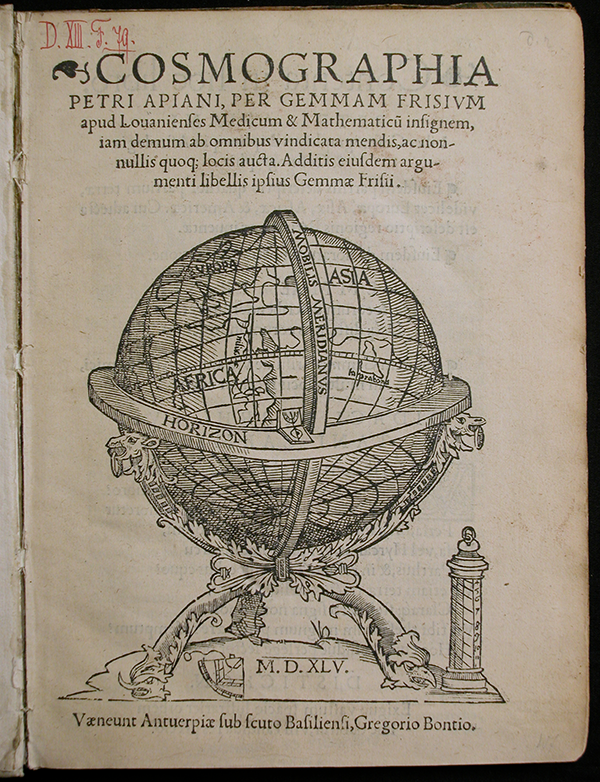
Peter Apian’s (1495–1552) greatest work was his Cosmographia published in 1524. The treatise provided instruction in astronomy, geography, cartography, navigation, and instrument-making. It was one of the first European books to depict and discuss North America and included movable volvelles allowing the readers to interact with and use some of the charts and instrument layouts presented. Gemma Frisius (1508–1555), a student of Apian, published expanded versions of the Cosmographia in 1545 and 1584, in which he included his own comments on measurement and instrument-making. In all its forms, the book was extremely popular in the 16th century, going through 30 printings in 14 languages. The title page of the 1545 extended version is shown above.
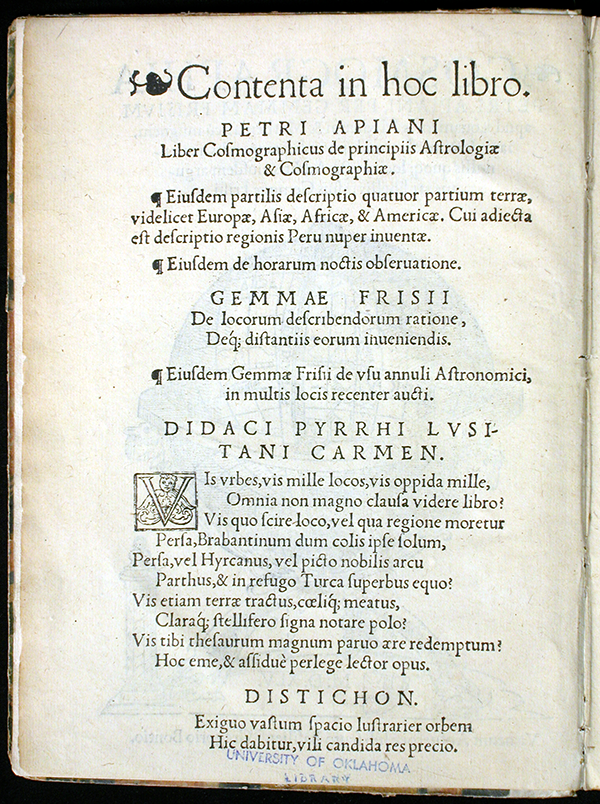
Above, the Table of Contents denoting the contributions of Apian and Frisius.
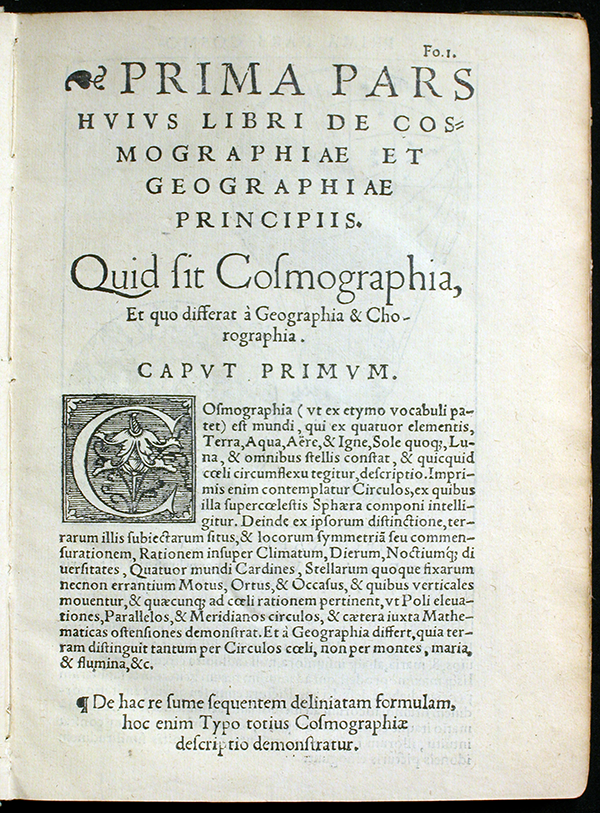
This is the first page (or folio) of the Cosmographia. Here Apian presented cosmography as a “description of the World (which consists of four elements, Earth, Water, Air, and Fire) also the Sun, Moon, and Stars and of the Heavens whatever vault covers them.” Apian’s Cosmography was, simply put, a consideration of the universe looking outwards from the Earth.
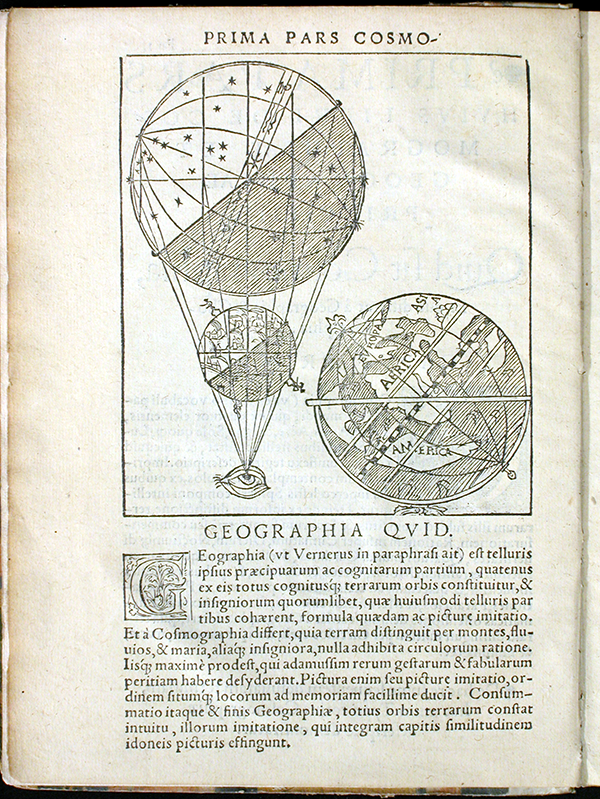
The Earth and dome of stars as viewed by the eye of God. Note the presence of “America” on the globe.
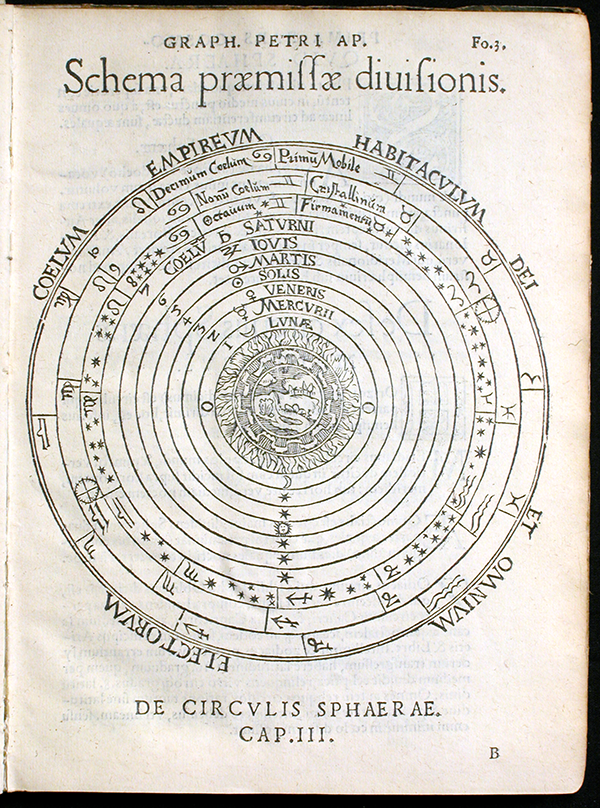
A schematic diagram of the geocentric universe. The outer bounding sphere determined the “Habitat of God and the Elected [Saints and Angels].”
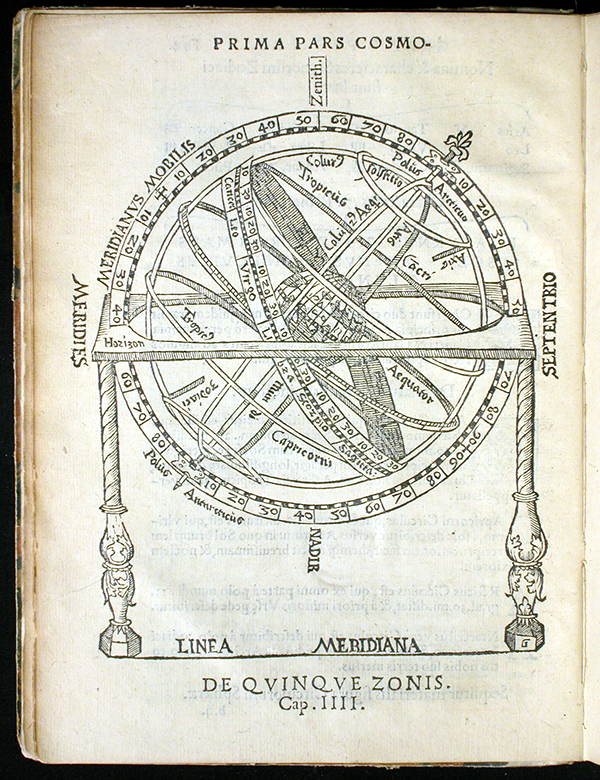
Folio 5 verso illustrates the five geographic zones of the Earth as depicted on a globe.

Here on folio 6 verso, Apian illustrated that the Earth is a sphere by considering its shadow on the moon’s surface during an eclipse. The shadows of various polyhedra were also depicted and ruled out. Note the personalizing of the Sun and the Moon by their faces.
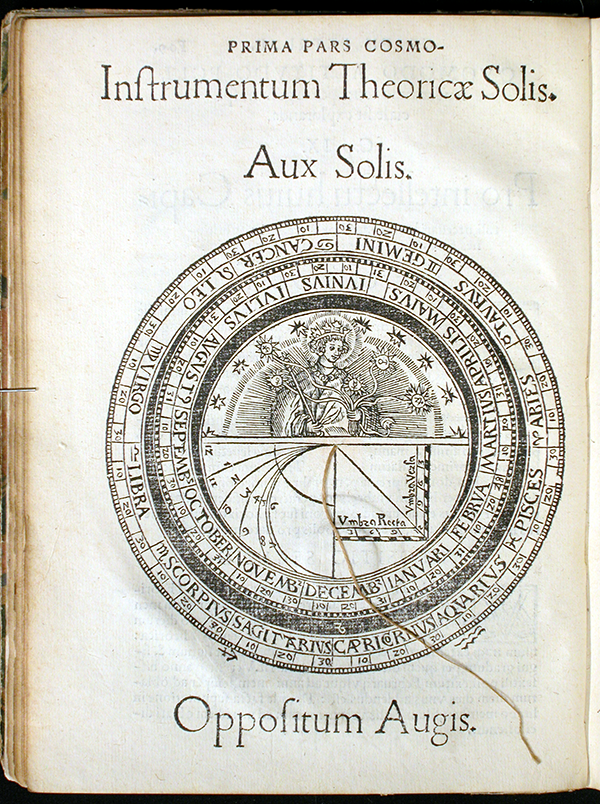
This page supplies an instrument, in the form of a chart, for determining the relative position of the sun in regards to the time of the year, the month, and the prevailing astrological sign. The string was original to the diagram and allowed reader interaction.
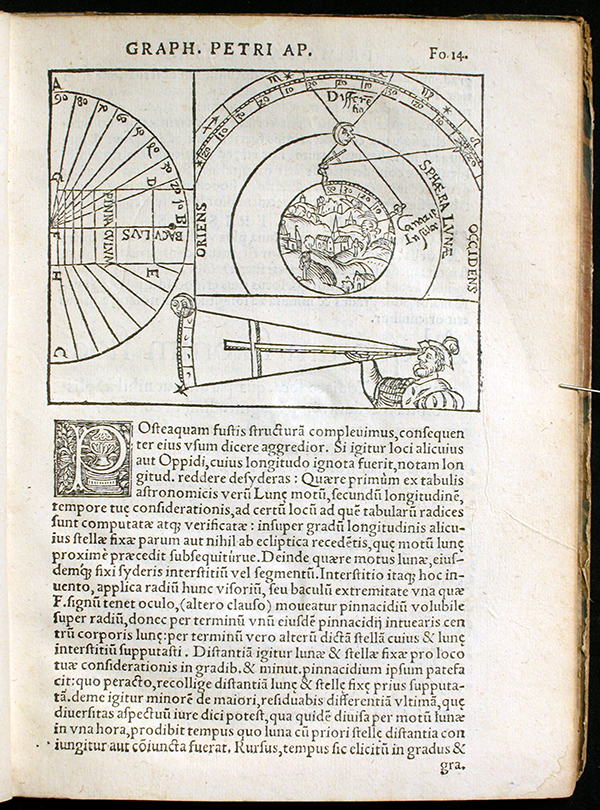
Folio 14 recto discusses the use of a staff, commonly known as a Jacob’s staff, to obtain celestial measurements.
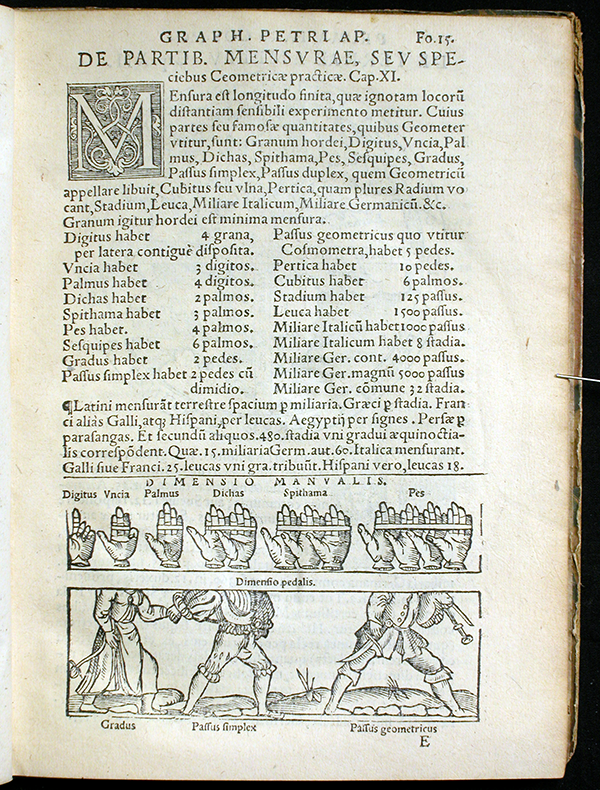
Folio 15 recto discusses and illustrates some of the common linear distance measures used in the 16th century. “Hand Measures” progress from the digit, or finger width, to the palm, to the hand measurement equivalent to a foot (four palms). “Foot Measures” go from the gradus or step, to the simple pace of two-and-a-half feet, to the passus geometricus of five feet. Readers familiar with word problems of this period may recognize other measurement terms in the text such as the leuca (or leuga or league), equal to 1.5 Roman miles, or stadia, plural of stadium, a Roman length of approximately 607 feet. Note also the variations of pace measurement such as the German military pace and the Italian military pace.
Convergence’s Mathematical Treasures also include a colorful image from Apian's Folium populi: Instrumentum (1533), as well as colorful images from his Instrumentum primi mobilis (1534) and his Introductio geographica (1534).
The images above were provided through the courtesy of the History of Science Collections, University of Oklahoma Libraries, and the special considerations of Kerry Magruder, Curator, and Carilyn Livesey, Coordinator of the Collection. These materials may be viewed in their entirety at the History of Science Collections website.
Frank Swetz (The Pennsylvania State University), "Mathematical Treasure: Peter Apian’s Cosmographia," Convergence (August 2013)




